English version
Greetings to all of you, colleagues. Relatively recently I shared with you a series of photographs in which I was practicing what is known as urban photography. This type of photography allows us to capture places in a city from quite particular angles.
Practicing with this type of photography seemed very interesting to me and it was, among other things, a lot of fun. However, I like to vary things, so on this occasion I would like to share with you other photographs in which I was practicing with a side of the narutaleza that often goes unnoticed. I present to you this set of photographs which I titled decomposition.

As I said, this side of nature often goes unnoticed because it is not something we usually pay attention to. We often see around us fallen leaves on the ground, organic waste decomposing, among other similar things; however, we do not stop to observe the process of decomposition of all these things and everything that happens during it.
Keeping in mind the above mentioned, I wanted to capture some moments of different things in a state of decomposition or degradation.
Such is the case of the first photograph I share with you:

This photograph is of a small mushroom that made its way through dry leaves falling from a tree. Usually, these mushrooms grow in the presence of abundant moisture and shade; moreover, it is evidence of a soil with abundant microorganisms capable of decomposing the organic matter in the soil.
Being the only one in the photograph, it stands out among so many leaves with different shapes, colors and textures.
This type of scenery allows us to capture different textures and colors that are not seen in other places. Such is the case of the following photograph:
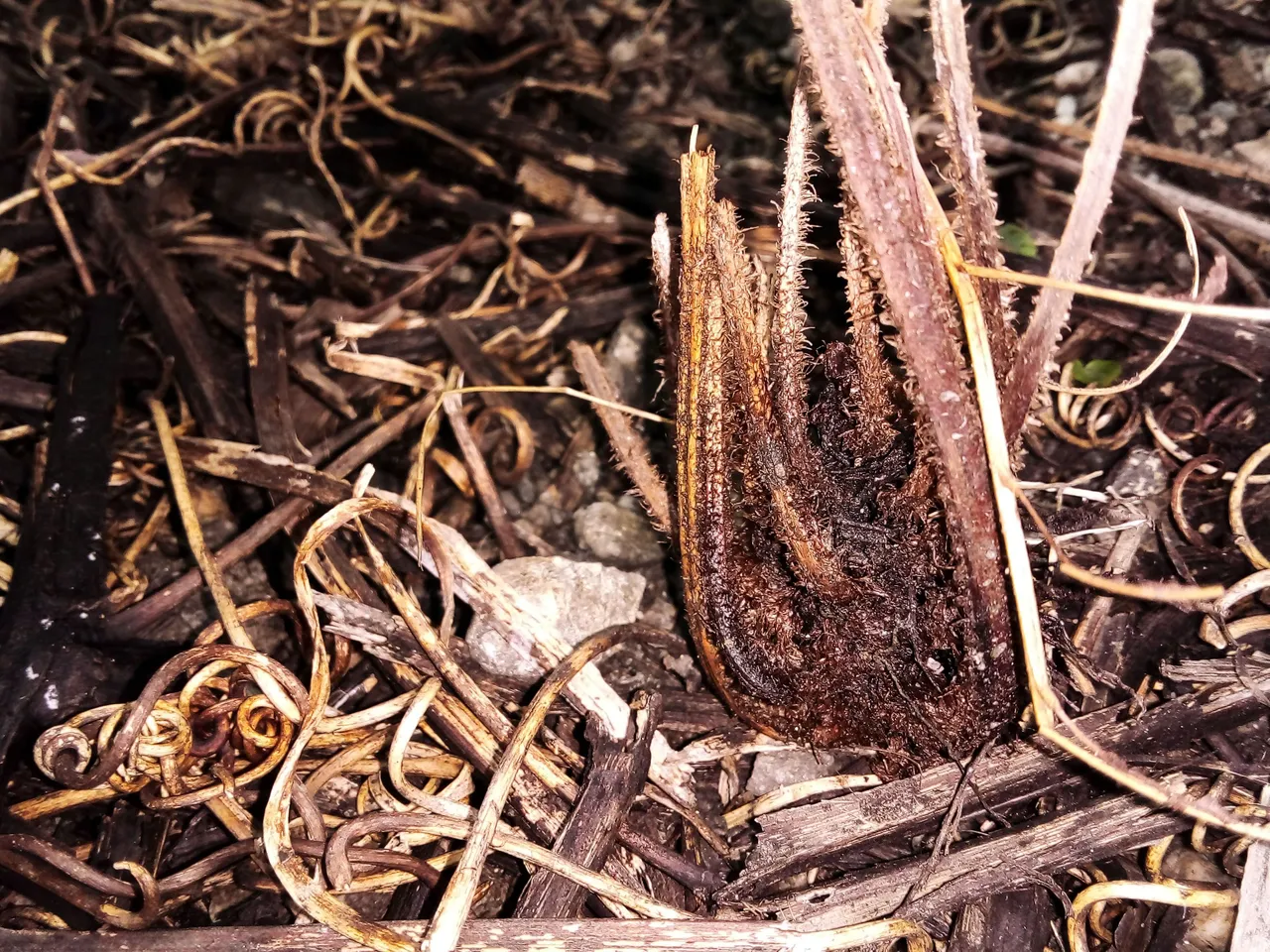
I don't know if this can be considered as an abstract photograph, I am not aware of the requirements for this type of photography; however, it is not so easy to determine which objects are the ones that compose the photograph.
Having taken the photo, I can tell what each thing is, because I have an idea of the context in which it was taken, but if I am ignorant of this context, it is a little difficult for me to understand what each thing is, because of its strange textures, shapes.
Look at this other photograph:
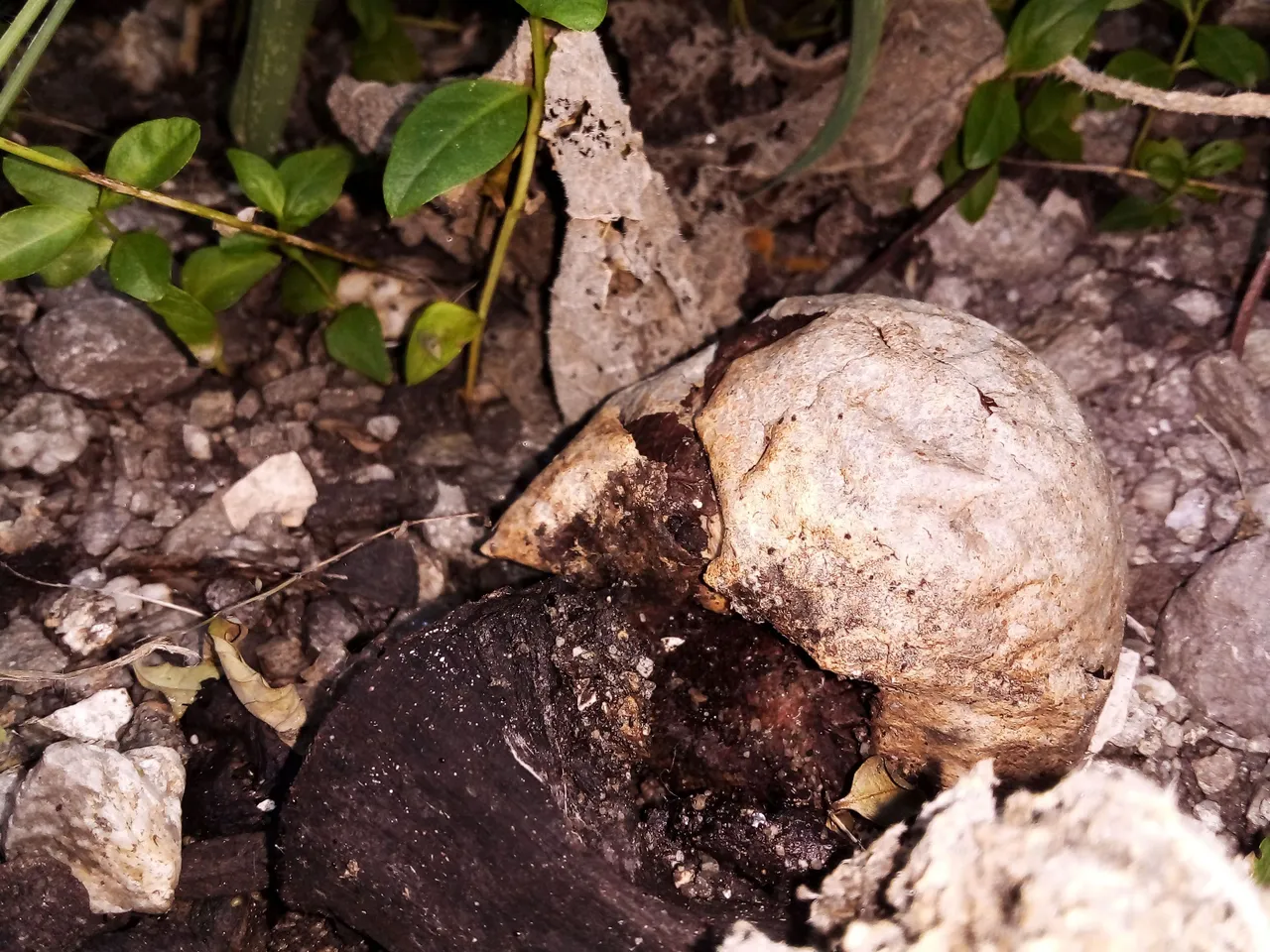
It is similar to the previous one. It is a central object in the photograph that is not easy to identify, although there are others that are much more familiar to viewers, such as the leaves in the background or the same pebbles that cover the ground.
Both are objects in a process of decomposition, a process that strips them of the form they originally had, but retains, in essence, the characteristic shape they once had.
In these scenarios, we can also encounter objects that are much easier to identify, even when they are decomposing. Such is the case of the following photo:
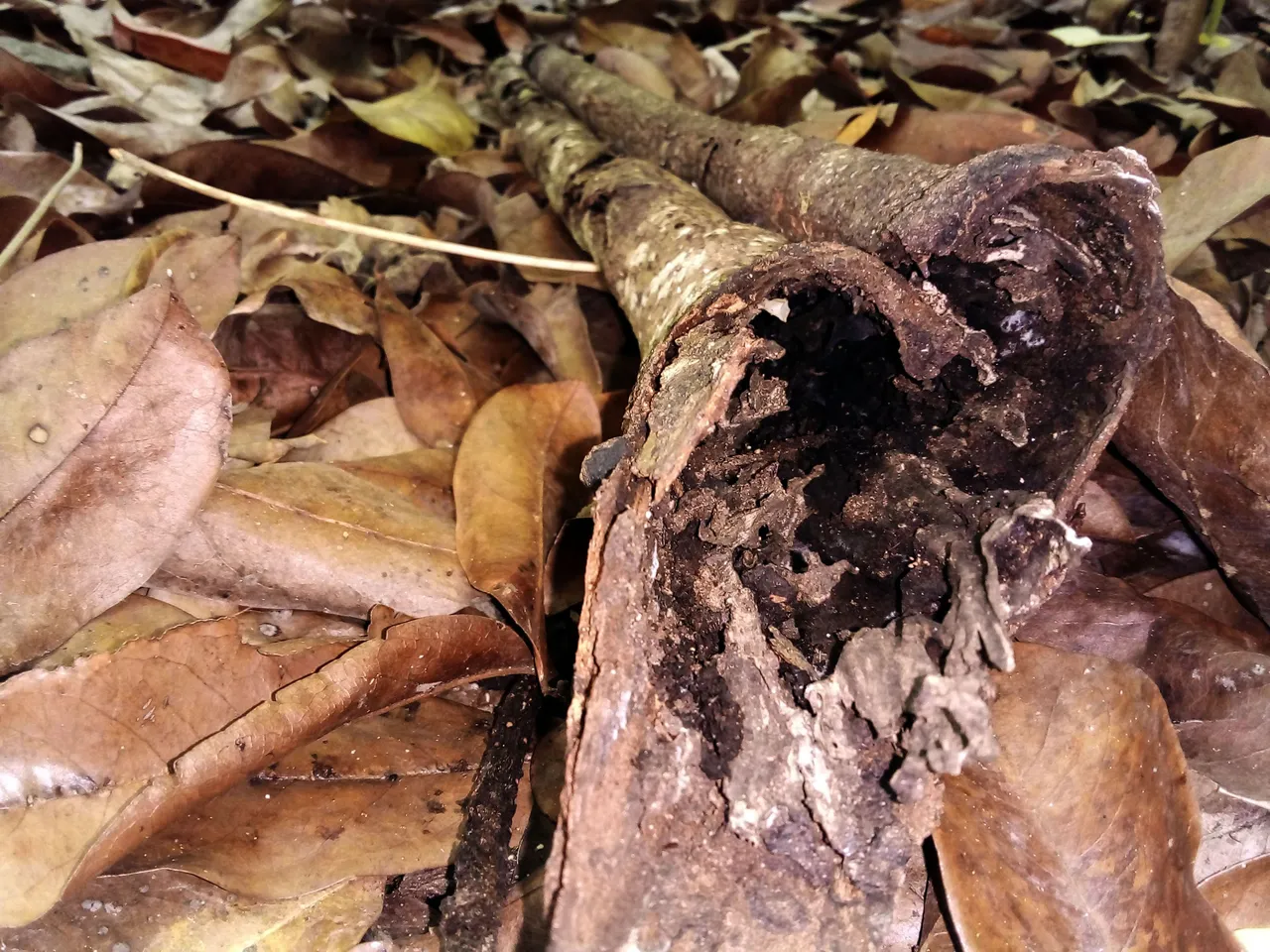
In this one we can observe a rotten branch of a tree. Although on the outside it has its properties, the truth is that inside it is blackened and totally hollow.
This photograph stands out for the various shapes and textures that can be seen in the rotten branch of the tree, which contrast with the smooth and well-defined shape of the leaves around it.
I confess that I would have loved to find a third fruit that would contrast with the phos seen in the photo below. A fruit in good condition would have allowed me to capture a sequence of the decomposition of these fruits in the open air. However, I managed to half capture this process.

In the front you can see a blackened and totally dried fruit, but still with its initial shape intact. In the background, on the contrary, you can see the fruit equally decomposed but lacking its original shape...
Well, time to talk about the main photograph of my publication. Anyone would think that this is a photograph of a cliff or some rocky surface, but it is not.
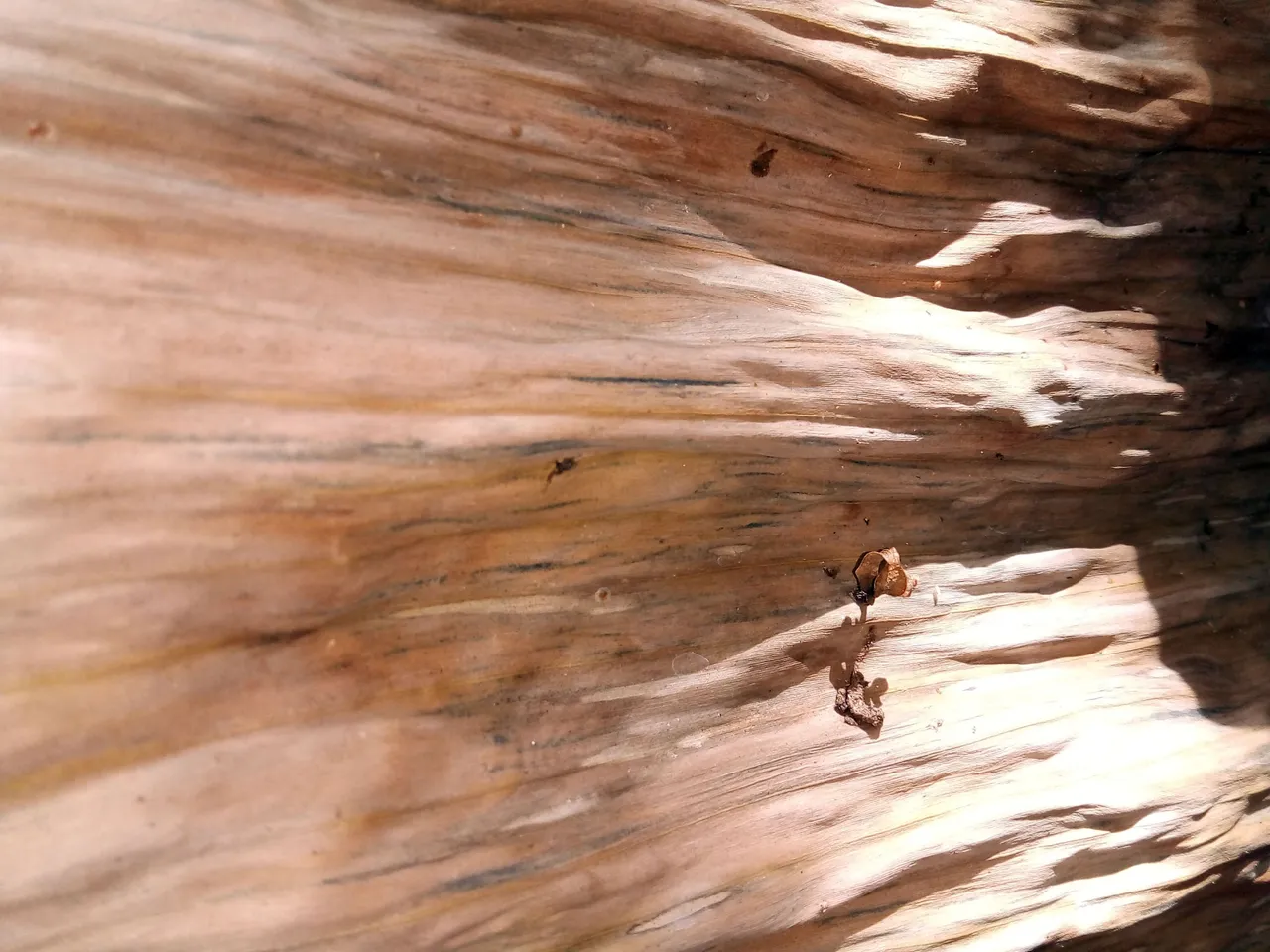
The wonderful thing about photography is that it allows us to trick the eye when we capture places and scenery from different angles than usual. Depending on the perspective, the camera can capture one thing or another.

In this section, I will take the liberty of telling you what the photographed object is, in case you don't know it yet. It is a dried leaf of a banana plant, the first step to its future decomposition.
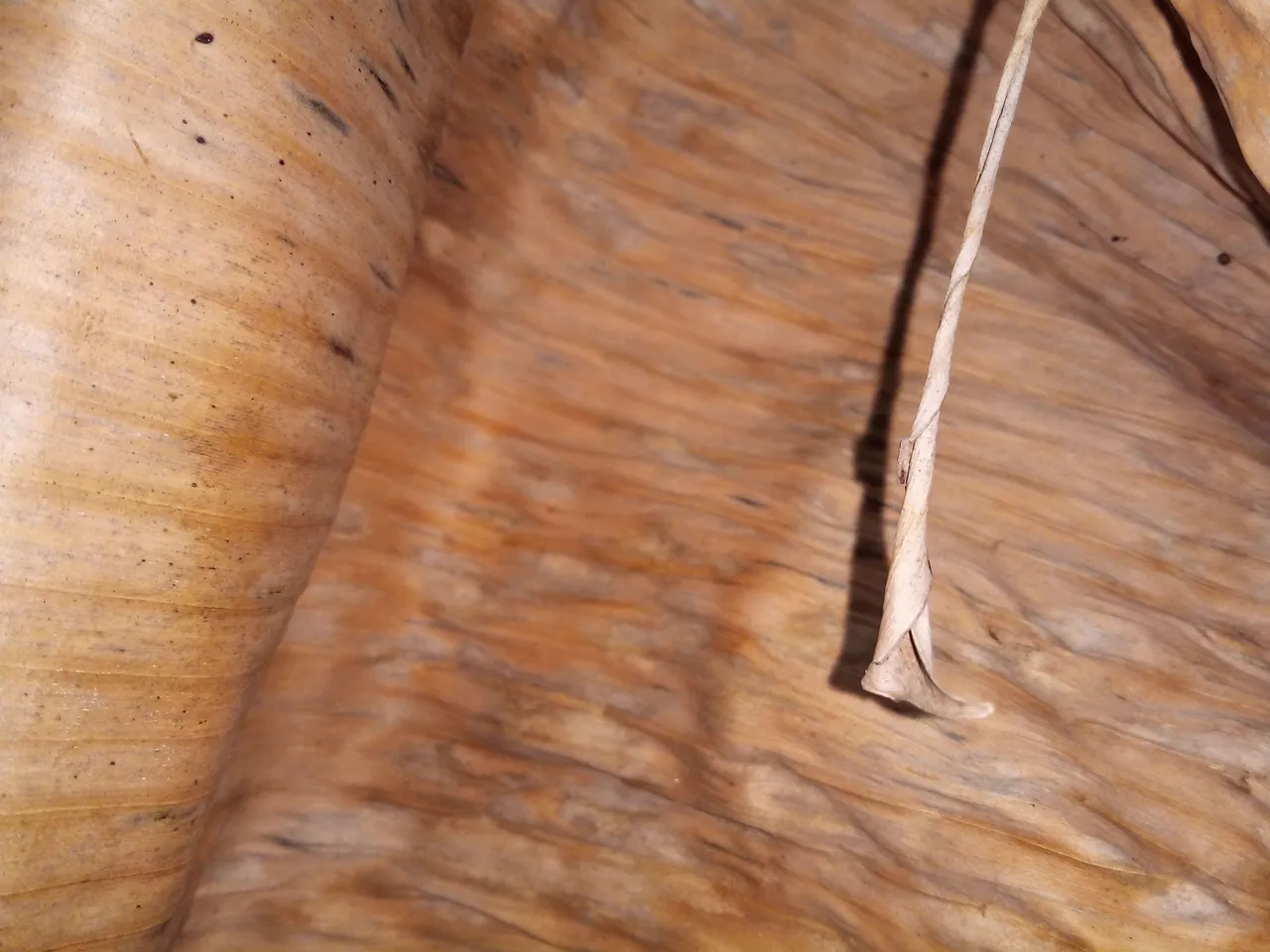
Finally, to take advantage of all these photographs I had taken, I wanted to practice a little black and white, so after making a couple of edits this was the result:

This photograph, in my opinion, has a much more interesting touch in black and white. It highlights for its clarity, the stem and color of the mushroom in contrast with the gray leaves in the surroundings.
On the other hand, I also made an edit on another of the photographs:

It also looks much more interesting than if it were in color, as you can see even more contrast between the decayed fruits and everything else.
Well folks, this has been all as far as my posting is concerned. I took these photographs in an open field near my house, with my Samsung Gálaxy A01 cell phone.
I hope you liked all the pictures and that you liked the publication in general. I take this opportunity to comment that I am not a professional photographer, no; on the contrary, I am simply an apprentice who always seeks to learn a little more every day of this beautiful art.
Finally, I invite you to leave your opinions below in the comments, as always, I will be happy to read them. I say goodbye then...
See you next time!
Versión en español
Saludos a todos, compañeros. Hace relativamente poco compartí con ustedes una serie de fotografías en las que estuve practicando lo que se conoce como fotografía urbana. Este tipo de fotografía nos permite captar lugares de una ciudad desde ángulos bastante particulares.
Practicar con este tipo de fotografía me pareció muy interesante y fue, entre otras cosas, muy divertido. Sin embargo, soy de variar las cosas, así que en esta ocasión me gustaría compartir con ustedes otras fotografías en las que estuve practicando con un lado de la narutaleza que a menudo pasa desapercibido. Les presento este conjunto de fotografías a las que titulé descomposición.

Como dije, este lado de la naturaleza a menudo pasa desapercibido porque no es algo a lo que se suele prestar atención. Con frecuencia vemos a nuestro alrededor hojas caidas en el suelo, desperdicios orgánicos descomponiéndose, entre otras cosas similares; sin embargo, no nos detemos a observar el proceso de descomposición de todas estas cosas y todo lo que ocurren durante este.
Teniendo presente lo antes mencionado, quise captar algunos momento de distintas cosas en un estado de descomposición o degradación.
Tal es el caso de la primera fotografía que les comparto:

Esta fotografía es de una pequeña seta que se abrió paso entre hojas secas que caen de un árbol. Por lo general, estas setas crecen en la presencia de abundante humedad y sombra; además, es evidencia de un suelo con abundantes microorganismos capaces de descomponer la materia orgánica del suelo.
Siendo el único que hay en la fotografía, resalta entre tantas hojas con diversas formas, colores y texturas.
Este tipo de escenarios nos permite captar diversas texturas y colores que en otros lugares no se ven. Tal es el caso de la siguiente fotografía:

No sé si esta pueda considerarse como fotografía abstracta, no estoy al tanto de qué requisitos hay que cumplir para este tipo de fotografías; sin embargo, no es tan fácil determinar qué objetos son los que componen la fotografía.
Al haber tomado la foto, puedo decir qué es cada cosa, porque tengo una idea del contexto en el que se tomó, pero si soy un ignorante de este contexto, se me hace un poco difícil entender qué es cada cosa, por sus extrañas texturas, formas.
Fíjense en esta otra fotografía:

Es similar a la anterior. Es un objeto central de la fotografía que no es fácil de identificar, aunque hay otros que sí son mucho más familiares para los espectadores, tal como las hojas al fondo o las mismas piedrecillas que cubren el suelo.
Ambos son objetos en un proceso de descomposición, un proceso que los despoja de la forma que tenían originalmente, pero que conserva, en escencia, la forma característica que alguna vez tuvieron.
En estos escenarios, también podemos encontrarnos con objetos que son mucho más fáciles de identificar, incluso cuando estan descomponiéndose. Tal es el caso de la siguiente foto:

En esta podemos observar una rama podrida de un árbol. Aunque por fuera conversa sus propiedades, lo cierto es que por dentro está enegrecida y totalmente hueca.
Esta fotografía destaca por las diversas formas y texturas que se aprecian en la rama podrida del árbol, que hacen contraste con la forma lisa y bien definida de las hojas alrededor.
Confieso que me habría encantado encontrar una tercera fruta que hiciera contraste con las fos que se aprecian en la foto a continuación. Una fruta en buenas condiciones me habría permitido captar una secuencia de la descomposición de estas frutas a la interperie. Sin embargo, logré captar a medias este proceso.

Al frente se puede ver una fruta enegrecida y totalmente seca, pero aún con su forma inicial intacta. Al fondo, por el contrario, se ve la fruta igualmente descompuesta pero carente de su forma original...
Bien, hora de hablar de la fotografía principal de mi publicación. Cualquiera podría pensar que se trata de una fotografía de un acantilado o alguna superficie rocosa, pero no es así.

Lo maravilloso de la fotografía es que nos permite engañar al ojo cuando captamos lugares y escenarios desde ángulos distintos al habitual. Según la perspectiva, la cámara puede captar una cosa u otra.

En este apartado, me tomaré el atrevimiento de comentarles qué es el objeto fotografiado, en caso de que aún no lo sepan. Se trata de una hoja seca de una planta de plátano, es el primer paso a su futura descomposición.

Finalmente, para aprovechar todas estas fotografías que había tomado, quise practicar un poco el blanco y negro, así que tras hacer un par de ediciones este fue el resultado:

Esta fotografía, en mi opinión, tiene un toque mucho más interesante a blanco y negro. Resalta por su claridad, el tallo y color de la seta en contraste con las hojas grises que hay en los alrededores.
Por otra parte, también hice una edición en otra de las fotografías:

También se ve mucho más interesante que si estuviese a color, pues se observa aún más el contraste entre las frutas descompuestas y todo lo demás.
Bien amigos, esto ha sido todo en lo que respecta a mi publicación. Estas fotografías las tomé en un terreno abierto cercano a mi casa, con mi teléfono Samsung Gálaxy A01.
Espero que todas las fotografías hayan sido de su agrado y que la publicación en general les haya gustado. Aprovecho para comentar que no soy un fotógrafo profesional, no; por el contrario, simplemente soy un aprendiz que siempre busca aprender un poco más cada día de este hermoso arte.
Ya para terminar, los invito a dejar sus opiniones abajo en los comentarios, como siempre, estaré encantado de leerlos. Me despido entonces...
¡Hasta la próxima!

Traducido con DeepL
Learn With Gabo #6
LATE - Graffiti Lettering Contest #6
Gabo's kitchen: Yellow peas


